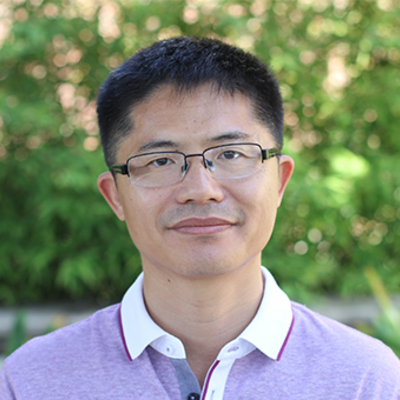Professor Feng GuoBy Jen Elana Quick-Cleveland  Dr. Feng Guo is a Professor of Biological Chemistry, and the Director of the Biochemistry, Biophysics and Structural Biology Home Area at the University of California Los Angeles. He has long been on the forefront of structural biology and RNA biochemistry, having published the first structures of Cre Recombinase and uncovering a role for heme in microRNA (miRNA) biogenesis. Currently, work in his lab focuses on developing therapeutics that target RNAs using structure-based methods. Throughout his career Dr. Guo has pursued challenging scientific problems and has been fearless in his approach to advancing the understanding of RNA biology. In 2020 he won the UCLA Innovation Fund Biomedical Competition, along with Prof. Carrie Miceli (UCLA), for their platform to develop antisense oligonucleotide therapeutics to combat genetic diseases.
Prof. Guo began his scientific career in China, earning a B.S. in Biophysics from Nankai University in Tianjin, and an M.S. in Physical Chemistry from Peking University in Beijing. While interviewing for a Ph.D. program at the University of Pennsylvania he met Prof. Gregory Van Duyne and learned his lab had some early crystals of Cre Recombinase, but no one to push the project forward. “I called him immediately when I heard I had been accepted and asked him to save the project!” Dr. Guo laughs, “I have always been very confident when it comes to science - when you see an opportunity, you jump on it!” He joined the Van Duyne lab and quickly solved the crystal structure of Cre Recombinase bound to a loxP substrate, publishing the results in Nature his first year in graduate school. While researching postdoc labs, Prof. Guo was attracted to the laboratory of Prof. Thomas Cech because of the way that he approached science - picking a scientific question and acquiring techniques along the way. He reached out to Dr. Cech and did not hear anything back. It turned out that Prof. Cech was downsizing his lab before he took on the role of HHMI President. However, Dr. Guo was determined to meet Dr. Cech, and true to character, he registered for an upcoming Gordon Conference where Dr. Cech was presenting. “I just waited in line to talk to him along with everyone else”, Dr. Guo recalls. He was invited to join the Cech lab at the University of Colorado, Boulder as a postdoc in 2000. His postdoctoral research focused on the structure determination and engineering of the Tetrahymena ribozyme. Dr. Guo believes the key to good science is to “get the most rigorous training you can, because you can’t look for discovery, you can only prepare yourself to recognize a discovery if it comes to you.” During his time in Colorado Dr. Guo became fascinated with RNA folding and decided that in his own lab he wanted to use structural approaches to understand the biological activity of RNAs. “What interests me is that we don’t fully understand how it (RNA) folds in 3-dimensional space, and I wanted that to drive the research in my lab.” In 2004 he began his independent lab at University of California Los Angeles, where he initially focused on studying the molecular mechanism of microRNA biogenesis. His group began by attempting to crystallize the miRNA processing factor DGCR8 to determine how primary microRNAs (pri-miRNAs) are recognized in 3-dimensional space. To their surprise, the purified DGCR8 protein turned out to be yellow, indicating the presence of a heme co-factor. His group went on to show that Fe (III) heme binds and activates DGCR8 while Fe(II) does not, opening up the potential for redox regulation of miRNA production. Prof. Guo’s group has also worked on approaches to address the challenge of crystallizing RNAs, devising several methods including in crystallo selection and scaffold-directed RNA crystallization that enabled them to solve the structure of eight human miR-precursor apical junctions and loops. Currently Prof. Guo is most excited by the potential of antisense oligos to cure diseases. “When I consider the big picture,” he says, “most of the genome is transcribed and only a small fraction encodes proteins. The vast majority of our drugs target proteins. With antisense oligos you can target any RNA and don’t need to depend on protein binding.” Dr. Guo’s lab uses their expertise in RNA structure to inform the design of RNA-binding antisense oligos and small molecules to fight cancers, genetic disorders, neurodegenerative and infectious diseases. Prof. Guo emphasizes the important role that his family has played in his scientific success. “I have had a high degree of support from my family throughout my career, my wife especially is so supportive - I’ve had this high-level of support from her for decades. But I paid the cost in balance - work often is put first.” He advises other scientists to strive for balance, “I have realized I must insist on spending more time with my family because you can easily be consumed by your work.” Dr. Guo does not have any one favorite RNA, but he likes RNA hairpins, “RNA likes to fold and form hairpins whether you want it to or not, they are the fundamental RNA fold.” He can be reached via email at [email protected] and details of his current projects can be found on his lab website https://guolab.mbi.ucla.edu. |
